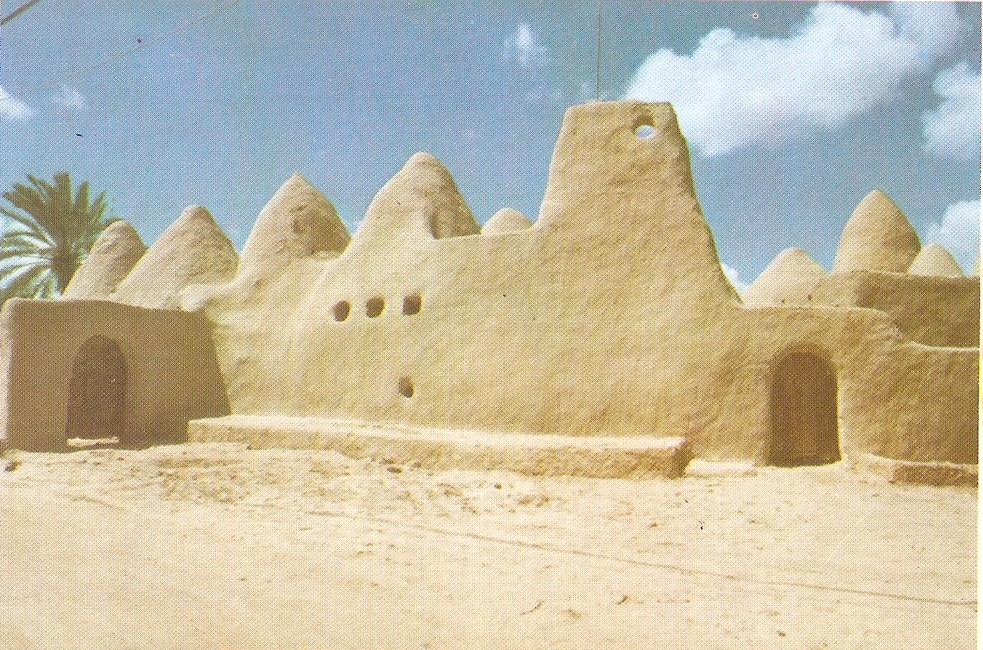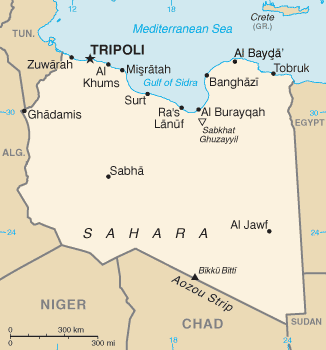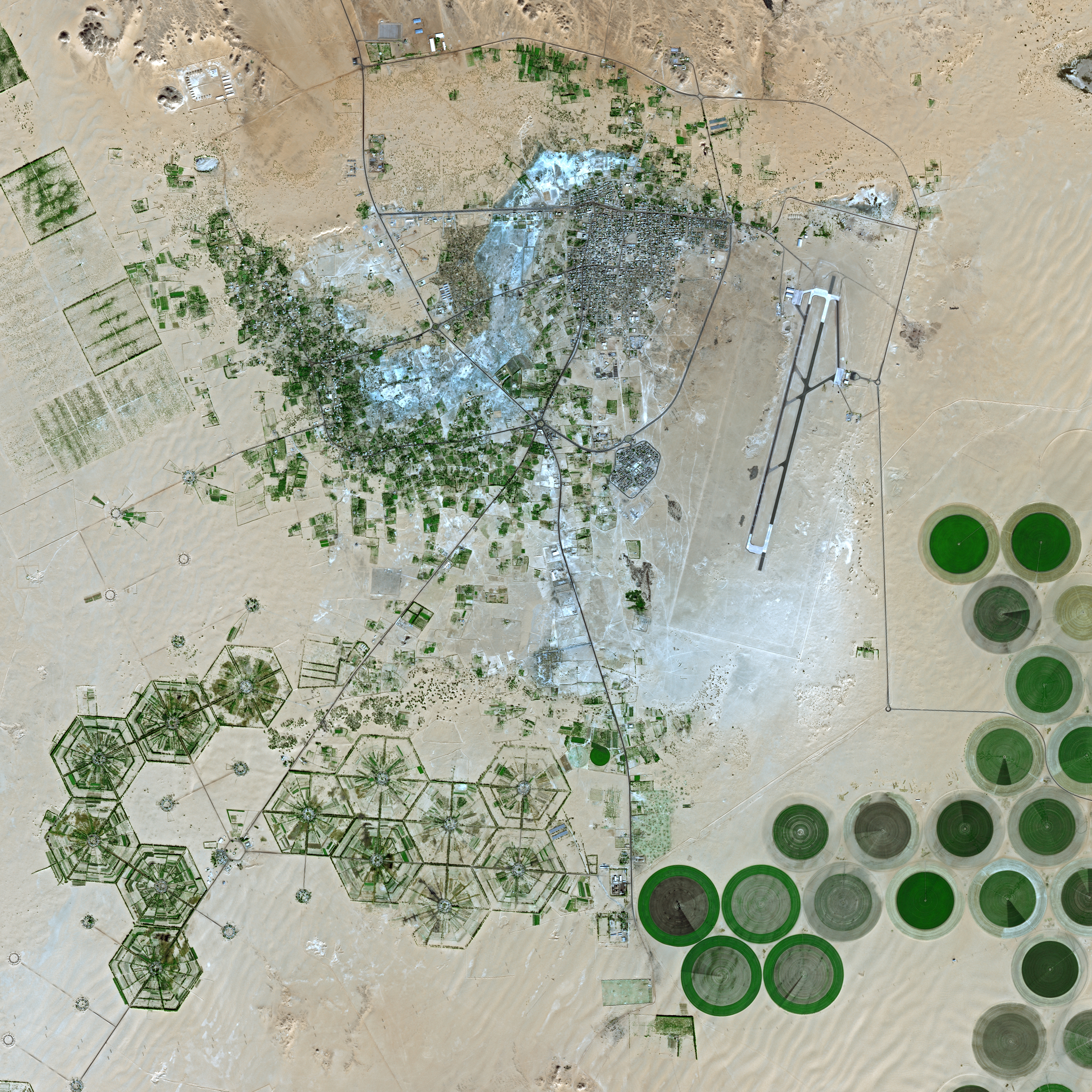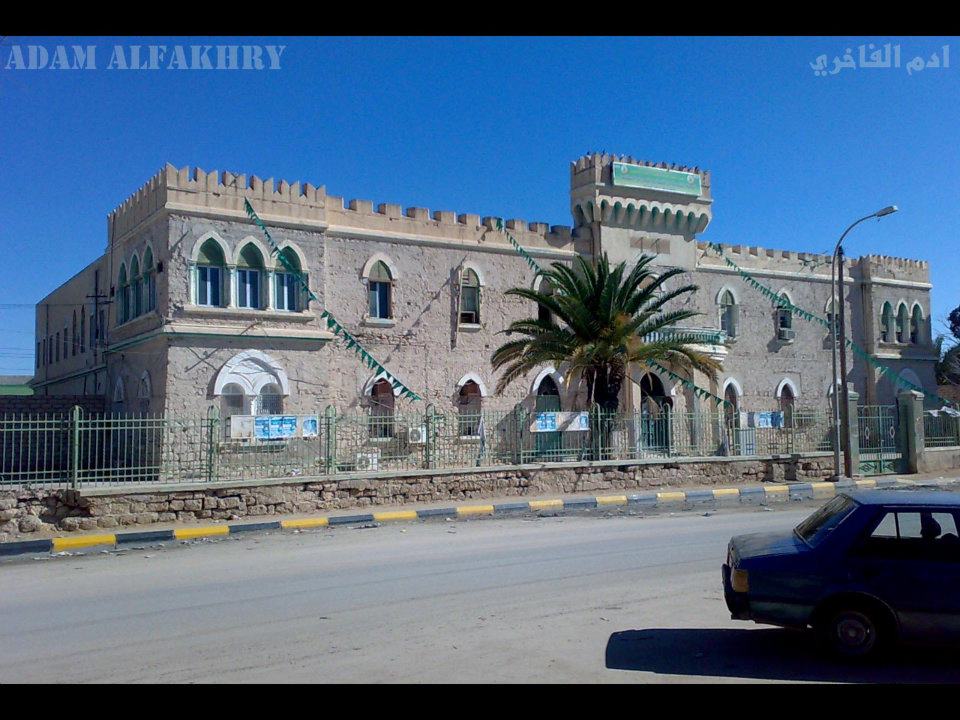|
Aujila
Awjila ( Berber: ''Awilan'', ''Awjila'', ''Awgila''; ar, أوجلة; Latin: ''Augila'') is an oasis town in the Al Wahat District in the Cyrenaica region of northeastern Libya. Since classical times it has been known as a place where high quality dates are farmed. From the Arab conquest in the 7th century, Islam has played an important role in the community. The oasis is located on the east-west caravan route between Egypt and Tripoli, Libya, and on the north-south route between Benghazi and the Sahel between Lake Chad and Darfur, and in the past was an important trading center. It is the place after which the Awjila language, an Eastern Berber language, is named. The people cultivate small gardens using water from deep wells. Recently, the oil industry has become an increasingly important source of employment. Location Awjila and the adjoining oasis of Jalu are isolated, the only towns on the desert highway between Ajdabiya, to the northwest, and Kufra, to the southeas ... [...More Info...] [...Related Items...] OR: [Wikipedia] [Google] [Baidu] |
Awjila Language
Awjila (also ''Aujila'', ''Augila'', ''Aoudjila'', ''Awgila'', ''Awdjila''; own name: Jlan n Awilen; in other Berber varieties Tawjilit) is a severely endangered (considered "moribund" by ''Ethnologue'') Eastern Berber language spoken in Cyrenaica, Libya, in the Awjila oasis. Due to the political situation in Libya, immediate data on the language has been inaccessible.van Putten, M. 2014. A Grammar of Awjila Berber (Libya). Based on Umberto Paradisi’s Material (Berber Studies 41). Rüdiger Köppe Verlag: Köln. However, Facebook postings by speakers and younger semi-speakers have provided some recent supplementary data. General information Awjila is a member of the Berber branch of the Afroasiatic language family, of the Eastern Berber subgroup. It is closely related to Ghadames of Libya though considerably more endangered, with an estimated 2,000–3,000 native speakers remaining. UNESCO considers Awjila to be seriously endangered as the youngest speakers have reached or p ... [...More Info...] [...Related Items...] OR: [Wikipedia] [Google] [Baidu] |
Friedrich Hornemann
Friedrich Conrad Hornemann (15 September 1772 – 1801) was a German explorer in Africa. Hornemann was born in Hildesheim, a city in Lower Saxony, Germany, located about 30 km southeast of Hannover. He was a young man when, early in 1796, he offered his services to the African Association of London as an explorer in Africa. The African Association sent him to the University of Göttingen to study Arabic and otherwise prepare for an expedition from the east into the unknown regions of North Africa. In September 1797 he arrived in Egypt, where he continued his studies. When the country was invaded by the French, he was confined in the citadel of Cairo to preserve him from the fanaticism of the populace. Liberated by the French, he received the patronage of Bonaparte. On 5 September 1798 he joined a caravan returning to the Maghreb from Mecca, attaching himself to a party of Fezzan merchants who accompanied the pilgrims. As an avowed Christian would not have been permitted to ... [...More Info...] [...Related Items...] OR: [Wikipedia] [Google] [Baidu] |
Tripoli, Libya
Tripoli (; ar, طرابلس الغرب, translit= Ṭarābulus al-Gharb , translation=Western Tripoli) is the capital and largest city of Libya, with a population of about 1.1 million people in 2019. It is located in the northwest of Libya on the edge of the desert, on a point of rocky land projecting into the Mediterranean Sea and forming a bay. It includes the port of Tripoli and the country's largest commercial and manufacturing center. It is also the site of the University of Tripoli. The vast barracks, which includes the former family estate of Muammar Gaddafi, is also located in the city. Colonel Gaddafi largely ruled the country from his residence in this barracks. Tripoli was founded in the 7th century BC by the Phoenicians, who gave it the Libyco-Berber name ( xpu, 𐤅𐤉𐤏𐤕, ) before passing into the hands of the Greek rulers of Cyrenaica as Oea ( grc-gre, Ὀία, ). Due to the city's long history, there are many sites of archeological s ... [...More Info...] [...Related Items...] OR: [Wikipedia] [Google] [Baidu] |
Darfur
Darfur ( ; ar, دار فور, Dār Fūr, lit=Realm of the Fur) is a region of western Sudan. ''Dār'' is an Arabic word meaning "home f – the region was named Dardaju ( ar, دار داجو, Dār Dājū, links=no) while ruled by the Daju, who migrated from Meroë , and it was renamed Dartunjur ( ar, دار تنجر, Dār Tunjur, links=no) when the Tunjur ruled the area. Darfur was an independent sultanate for several hundred years Richard Cockett Sudan: Darfur and the failure of an African state. 2010. Hobbs the Printers Ltd., Totten, Hampshire. until it was incorporated into Sudan by Anglo-Egyptian forces in 1916. As an administrative region, Darfur is divided into five federal states: Central Darfur, East Darfur, North Darfur, South Darfur and West Darfur. Because of the War in Darfur between Sudanese government forces and the indigenous population, the region has been in a state of humanitarian emergency and genocide since 2003. The factors include religi ... [...More Info...] [...Related Items...] OR: [Wikipedia] [Google] [Baidu] |
Siwa Oasis
The Siwa Oasis ( ar, واحة سيوة, ''Wāḥat Sīwah,'' ) is an urban oasis in Egypt; between the Qattara Depression and the Great Sand Sea in the Western Desert, 50 km (30 mi) east of the Libyan border, and 560 km (348 mi) from the capital. Its fame primarily from its ancient role as the home to an oracle of Ammon, the ruins of which are a popular tourist attraction which gave the oasis its ancient name Oasis of Amun Ra, a major Egyptian deity. Geography The Siwa oasis is in a deep depression that reaches below sea level, to about . To the west the Jaghbub oasis rests in a similar depression and to the east , the large Qattara Depression is also below sea level. Name The Ancient Egyptian name of the oasis was ''sḫt jꜣmw'', meaning "Field of Trees". The native Libyan toponym may be preserved in the Egyptian ''t̠ꜣ(j) n d̠rw “tꜣj'' on the fringe” where ''t̠ꜣ'' transcribed the local Palaeo-Berber name ''*Se'' or ''*Sa''. This n ... [...More Info...] [...Related Items...] OR: [Wikipedia] [Google] [Baidu] |
Gulf Of Sidra
The Gulf of Sidra ( ar, خليج السدرة, Khalij as-Sidra, also known as the Gulf of Sirte ( ar, خليج سرت, Khalij Surt, is a body of water in the Mediterranean Sea on the northern coast of Libya, named after the oil port of Sidra, Libya, Sidra or the city of Sirte. It was also historically known as the Great Sirte or Greater Syrtis ( la, Syrtis Major; grc, Σύρτις μεγάλη; contrasting with Syrtis Minor on the coast of Tunisia). Geography The Gulf of Sidra or Sirte has been a major center for tuna fishing in the Mediterranean for centuries. It gives its name to the city of Sirte situated on its western side. The gulf measures from the promontory of Boreum (now Ras Teyonas) on the East side to the promontory of Cephalae (Ras Kasr Hamet) on the West. The greatest extension of the gulf inland is land inward and occupies an area of 57,000 square kilometres. History Ancient history Syrtis is referred to in the New Testament of the Bible, where Luke rela ... [...More Info...] [...Related Items...] OR: [Wikipedia] [Google] [Baidu] |
Nasamones
The Nasamones ( grc, Νασαμῶνες) were a nomadic Berber tribe inhabiting southeast Libya. They were believed to be a Numidian people, along with the Garamantes. They took their name from Nasamon (Νασάμων), the son of Amphithemis and the nymph Tritonis. The Nasamones were centred in the oases of Augila and Siwa in the Libyan Desert. They used war chariots, like the Garamantes. They were known to attack the Greek colonies in Cyrenaica. During the Peloponnesian War, the citizens of Euesperides received aid from the Spartan general Gylippus, who helped defend the town from the Nasamones on his way to Sicily. Later, Pliny the Elder recounts that the Nasamones defeated the Psylli tribe in war, expelling them from the area. The Roman emperor Augustus attempted to pacify the desert tribes and sent proconsul Publius Sulpicius Quirinus to govern Creta et Cyrenaica in 15 BC. The Nasamones were temporarily subjugated by the Romans and remained relatively autonomous. Accor ... [...More Info...] [...Related Items...] OR: [Wikipedia] [Google] [Baidu] |
Herodotus
Herodotus ( ; grc, , }; BC) was an ancient Greek historian and geographer from the Greek city of Halicarnassus, part of the Persian Empire (now Bodrum, Turkey) and a later citizen of Thurii in modern Calabria ( Italy). He is known for having written the ''Histories'' – a detailed account of the Greco-Persian Wars. Herodotus was the first writer to perform systematic investigation of historical events. He is referred to as " The Father of History", a title conferred on him by the ancient Roman orator Cicero. The ''Histories'' primarily cover the lives of prominent kings and famous battles such as Marathon, Thermopylae, Artemisium, Salamis, Plataea, and Mycale. His work deviates from the main topics to provide a cultural, ethnographical, geographical, and historiographical background that forms an essential part of the narrative and provides readers with a wellspring of additional information. Herodotus has been criticized for his inclusion of "legends and fa ... [...More Info...] [...Related Items...] OR: [Wikipedia] [Google] [Baidu] |
Berber People
, image = File:Berber_flag.svg , caption = The Berber flag, Berber ethnic flag , population = 36 million , region1 = Morocco , pop1 = 14 million to 18 million , region2 = Algeria , pop2 = 9 million to ~13 million , region3 = Mauritania , pop3 = 2.9 million , region4 = Niger , pop4 = 2.6 million, Niger: 11% of 23.6 million , region5 = France , pop5 = 2 million , region6 = Mali , pop6 = 850,000 , region7 = Libya , pop7 = 600,000 , region8 = Belgium , pop8 = 500,000 (including descendants) , region9 = Netherlands , pop9 = 467,455 (including descendants) , region10 = Burkina Faso , pop10 = 406,271, Burkina Faso: 1.9% of 21.4 million , region11 = Egypt , pop11 = 23,000 or 1,826,580 , region12 = Tunisia , ... [...More Info...] [...Related Items...] OR: [Wikipedia] [Google] [Baidu] |
Jikharra
Jikharra (إجخرة ''Ijkharrah'') is a desert oasis town formerly in the Al Wahat District, Cyrenaica region, in north-eastern Libya. Prior to 2007, it was in the Ajdabiya District Ajdabiya ( ar, إجدابيا) was one of the districts of Libya. It lay in the northeastern part of the country. Its capital was Ajdabiya. As of 2007 it was subsumed within the enlarged Al Wahat District. When Ajdabiya District was in existence .... After 2015 it was in Jikharra District (بلدية إجخرة). References External linksSatellite map at Maplandia.com* http://www.wintershall.com/en/worldwide/libya.html Oases of Libya Populated places in Al Wahat District Cyrenaica Baladiyat of Libya {{libya-geo-stub ... [...More Info...] [...Related Items...] OR: [Wikipedia] [Google] [Baidu] |
Kufra
Kufra () is a basinBertarelli (1929), p. 514. and oasis group in the Kufra District of southeastern Cyrenaica in Libya. At the end of nineteenth century Kufra became the centre and holy place of the Senussi order. It also played a minor role in the Western Desert Campaign of World War II. It is located in a particularly isolated area, not only because it is in the middle of the Sahara Desert but also because it is surrounded on three sides by depressions which make it dominate the passage in east-west land traffic across the desert. For the colonial Italians, it was also important as a station on the north-south air route to Italian East Africa. These factors, along with Kufra's dominance of the southeastern Cyrenaica region of Libya, highlight the strategic importance of the oasis and why it was a point of conflict during World War II. Etymology The folk etymology associaters the word Kufra as coming from the Arabic word kafir, the Arabic term for non-Muslims (often transl ... [...More Info...] [...Related Items...] OR: [Wikipedia] [Google] [Baidu] |
Ajdabiya
Ajdabiya ( ; ar, أجدابيا, Aǧdābiyā) is a town in and capital of the Al Wahat District in northeastern Libya. It is some south of Benghazi. From 2001 to 2007 it was part of and capital of the Ajdabiya District. The town is divided into three Basic People's Congresses: North Ajdabiya, West Ajdabiya and East Ajdabiya."شعبيات الجماهيرية العظمى " Sha'biyat of Great Jamahiriya, accessed July 6, 2007 During the , the city changed hands several times between rebels and pro-Gaddafi forces, with the anti-Gaddafi forces fi ... [...More Info...] [...Related Items...] OR: [Wikipedia] [Google] [Baidu] |






